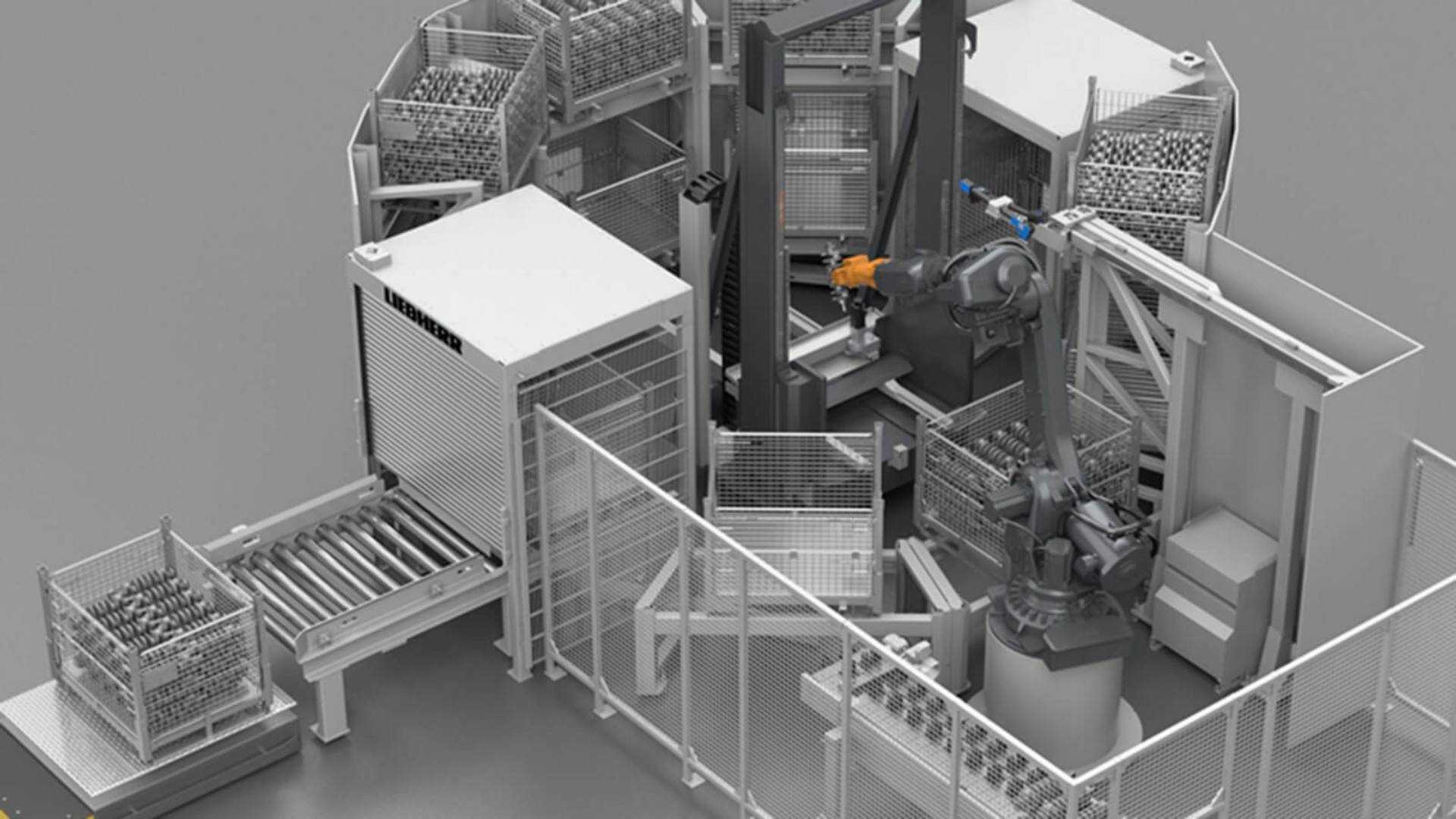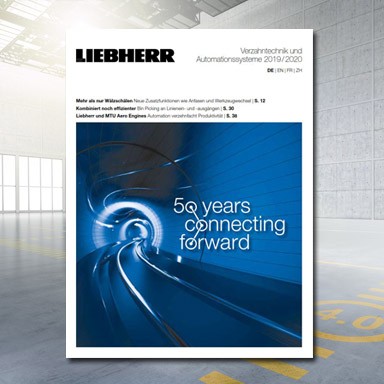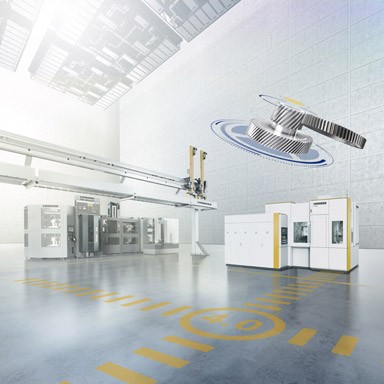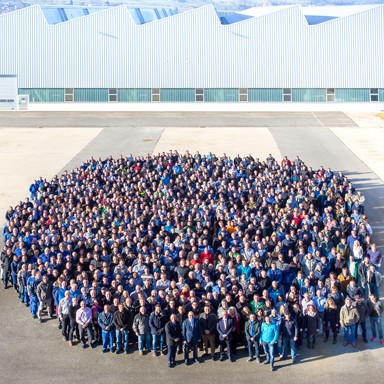In many modern production facilities, manufacturing lines with numerous machines work through various processing steps in an automated manner. Uwe Radigk, Head of Global Key Account Management in the automation division of Liebherr-Verzahntechnik GmbH, knows that automation often stops at the end of the line: “Loading components on these production lines still often takes place by hand. Blanks are supplied to the bins in chaotic order and positioned for machining by workers. The aim here is to provide sensible automation solutions for the inputs and outputs of these kinds of production lines as well that make the production process easier and more reliable.” The smaller the batch size and the more diverse the components and workpieces that are produced on the line, the more challenging this task becomes.
Liebherr has developed highly flexible intralogistics for a customer in the automotive industry. “In this particular example, a manufacturing line with about 30 machines processes and machines crank shaft blanks of different types from an unfinished to a finished part”, reports Uwe Radigk who supervised the project. “These arrive in random order in bins at the start of the line. Production is not meant to be controlled through complete emptying of each bin, though, rather via the specified number from the customer’s main computer. If only half of the blanks in a bin are required, the remainder is stored for an interim period and processing continues on new bins with different component types.”




